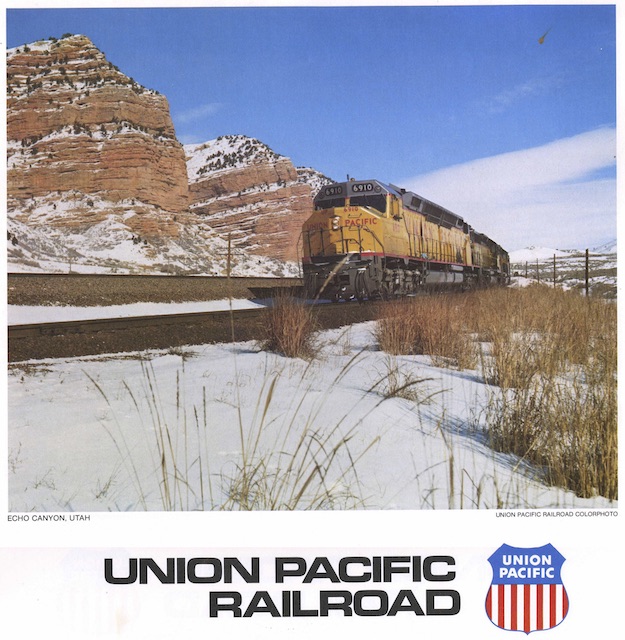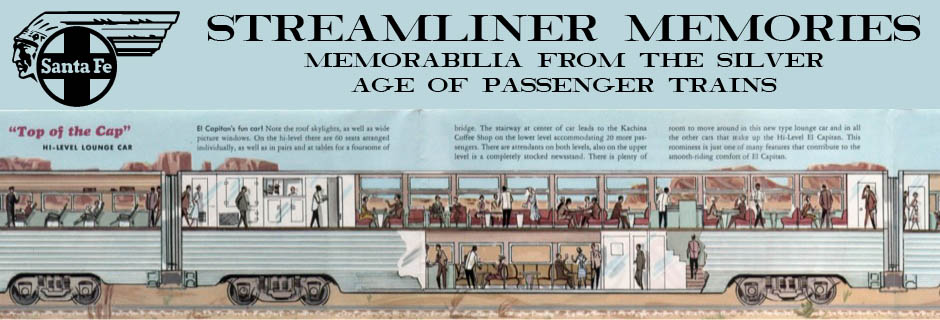Following the tradition of the previous few years, UP’s 1981 calendar included four photos of trains while the rest were mountain and farm scenery — no ocean views this year, though there is a nice sunset photo of a large lake in Kansas.
 Click to download an 16.0-MB PDF of this calendar.
Click to download an 16.0-MB PDF of this calendar.
A special treat is that one of the train photos is of UP’s 4-8-4 steam locomotive, the 844 (or, as it was called then, the 8444). This is the only steam locomotive that has never been retired by a class 1 railroad. Unfortunately, the photo is a night shot, and so the main thing it shows is black on black.
Once again, UP photographers invaded Great Northern/Burlington Northern territory with a picture of Hart’s Pass Road, the highest-elevation road in Washington. Hart’s Pass is in the Okanogan National Forest, and the Okanogan Valley produced many carloads of fruit for Great Northern trains. This is a little closer to UP tracks than Leavenworth, but still more than 130 miles away.
I was also curious to see two photos of the Grand Tetons from the Idaho side of the mountains, where they more-or-less mirror their silhouette from the Wyoming side. The October photo has the Tetons in the background of an Idaho farm scene, while the December photo is a close-up of Grand Teton in deep snows. I’ve been to the spot where this photo was taken, and it was a difficult hike in mid-summer. It must have taken quite an effort to get there on snowshoes or cross-country skis, especially considering the elevation is over 10,000 feet, which is enough to leave most lowlanders short of breath.
